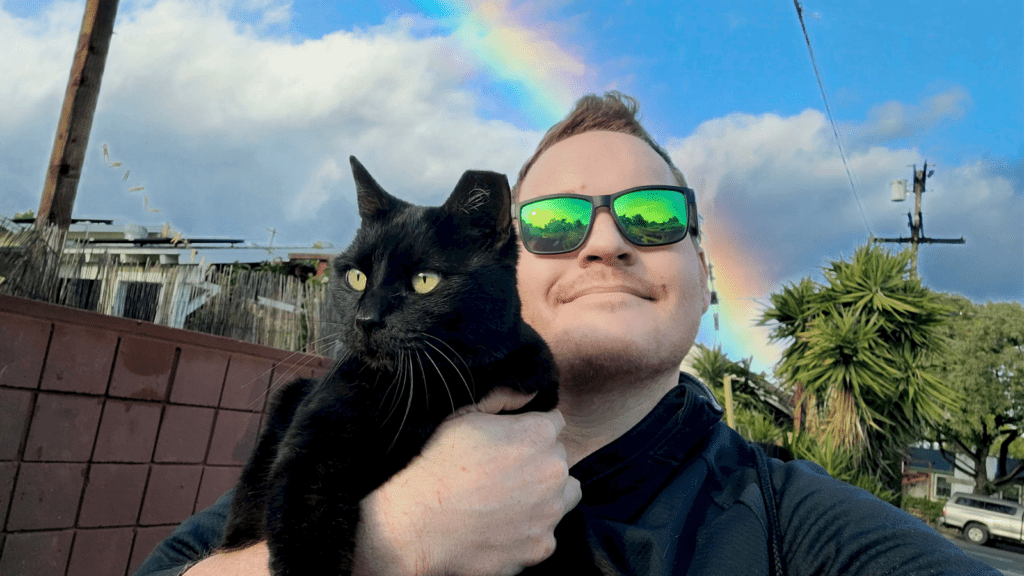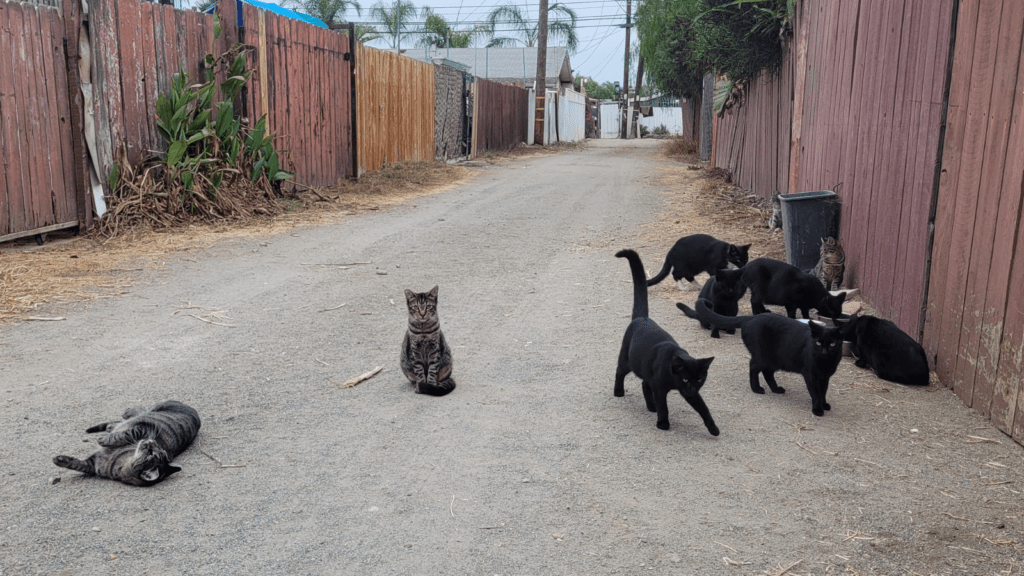
How to TNR Cats
In some places, outdoor cats rule to roost. In other places, you may only see a stray cat or a runaway indoor cat from time to time. I live near a canyon and have frequent sightings of new canyon kitties that tease my indoor cats. In fact, two of the kitties I adopted are from the canyon and have ear tips. At first, I didn’t know what ear tipping was, which was my first introduction to TNR. I looked up ear tipping, and I’ve been hooked on trap, neuter, return (TNR) ever since.
TNR programs are about caring for community cats through trapping, spaying/neutering, vaccinating, and returning them to their outdoor home. Trap neuter return is a great way to help keep feral cats safe, healthy, and fixed. Feral cats are usually less likely to socialize with humans. They are harder to foster and adopt and less likely to be taken in by a shelter. The only other humane option is to support the outdoor cat colony.
Here are a few things that will help you get started on your TNR journey!
Community Relations
Once you’ve identified a feral cat, stray cat, or community cat that needs assistance, it’s important to ask any neighbors if they are feeding the cats or are aware of any cat rescue or animal control groups working in the area. You can also post on Nextdoor, Instagram, and Facebook Groups to identify other supporters of the colony. Contacting any shelters near the neighborhood can also help provide information about colonies in the area.
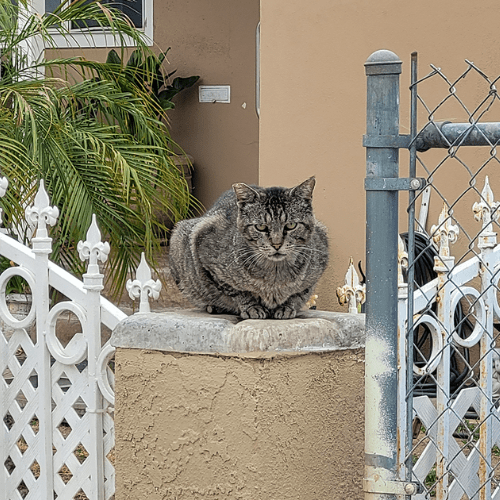
Establish A Feeding Pattern
When you have an understanding of the situation and can identify the number of cats and if they are spayed or neutered, spend about two weeks feeding them, building trust, and counting all the cats and kittens in the colony. Catalog the free-roaming cats and note which ones might be friendly and if any have health concerns.
Don’t leave food out 24/7, and it’s important to maintain a clean feeding station. Try to establish a routine and feed the colony at the same time every day. It’s helpful to train them with sound by shaking your keys, shaking the food, or whistling. It won’t take long before the kitties are happily greeting their caregivers each day!
Once you and the cats are friends, make an appointment with a local TNR-friendly Veterinarian or shelter to bring your cats in.
Trapping Cats
Don’t feed the stray cats the day before you trap them so they are extra hungry. It’s a good idea to leave a note at the feeding station and where the cats live so other humans don’t feed them during that time.
It’s advised to trap all the cats living in the colony at the same time. Prepare and test the traps the night before, and make sure you have the correct supplies, including one extra trap, just in case. You’ll want a few towels, tarps, and gloves. If it’s your first time, it’s ok to over-prepare.
Pro tip: If you’re trapping several cats, it’s best to start one day early. That will allow you a second chance to come back to catch any remaining before your vet appointment for spaying and neutering.
Once you lay the traps around the area of the cats, be sure to stay nearby. Never leave traps unattended for too long, and always be sure to count all the traps to make sure you don’t forget any.
Monitoring the traps from a near distance ensures the cats are humanely trapped, and nothing goes wrong.
Use strong-smelling like tuna fish or PureBites Salmon, and it shouldn’t take long for the hungry cats to enter the trap. For cautious cats, you can place food in a trail leading into the back of the trap to entice them in.
Place the trap next to something to camouflage it or help it bend in. Animals will be suspicious of a trap all by itself. There may be a hotspot where the cats feel more comfortable entering the trap. If you find the hotspot, you can replace the trap and catch multiple cats in the same location.
Some trappers like to cover the trap during the trapping, and others prefer to leave it uncovered. Once the cat is in the trap, covering the trap with a towel will usually help the cat calm down in minutes.
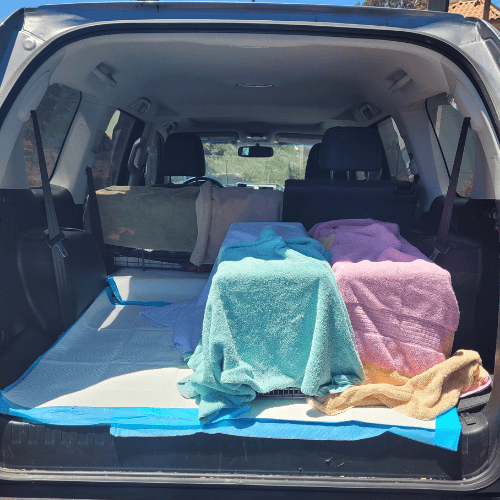
Pro Tip: Get a cat trap divider to help separate the cat from the entrance, which helps during transportation and gives you more access to food and bedding in the trap.
Here are some of the most popular cat traps we’ve reviewed.
Spay Or Neuter
The spay and neuter parts of trap, neuter, and return are crucial to controlling cat populations. The veterinarian will give the cat a check-up, administer standard vaccinations for feral cats, and clip the cat’s ear. The ear tip is performed while the cat is under anesthesia so the cat doesn’t feel it. The thin ear heals very quickly but does require a few days of cleaning when possible.
Once the cats have seen the vet for spay and neuter and been vaccinated, they will generally return with the trapper to be monitored for a 24-hour recovery period. They should receive some light food and water while you watch them for any post-surgery issues, such as vomiting or bleeding.
Pro Tip: Prepare your holding space ahead of time. Make sure the space is secure, clean, warm, and dry. Anesthesia can cause a cat’s body temperature to drop. Kittens also usually require a warmer space.
Vaccinations For Feral Cats
Feral cats will receive a typical check-up for fleas and worms and, in some cases, additional common exams or bloodwork. Common vaccinations for feral cats include feline leukemia, feline distemper, and rabies (source).
Be sure to ask for all the records from the cat so you can leave notes for a foster or caretaker.
Returning Community Cats Home
Once your cats are energized and free from the anesthesia, it’s time to release them back to their outdoor home or cat colonies.
Return the cats to the same place or property area where you picked them up. Give them a minute to recognize their location before you release them. Many trappers will take pictures and videos of the release day. You’ve done a great job getting your cats the care they need!
You can then resume feeding and caring for your furry friends or find a caretaker program to take over.
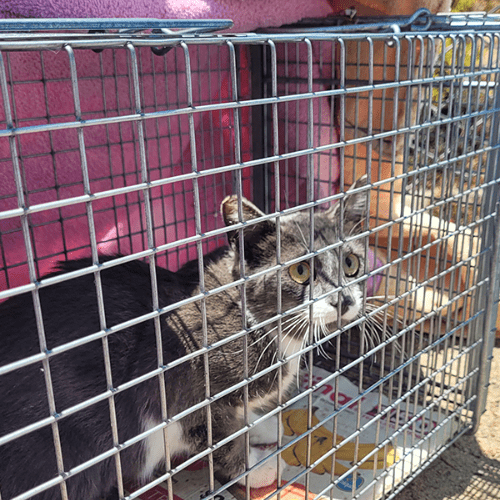
Monitoring Colony Cats
Immediately after the TNR, some cats who get trapped may not be happy with you for a few days, but they will return and remember they love you.
Use the best quality food you can afford and a mix of wet and dry food when possible. Here are some of our favorite foods for outdoor cats. Always provide a water dish, and you can also add water to the wet food.
You may want to consider creating a feeding station that helps to keep the space clean and dry.
Supporting community cats in their outdoor habitat, even in the city, helps to manage the animal population, prevents the vacuum effect, and improves cats’ lives. Spayed, neutered, vaccinated, and healthy cats living in communities are great long-term solutions.
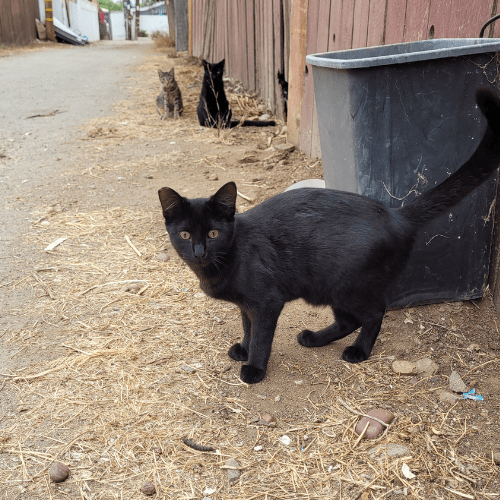
During the winter, you may also want to provide a waterproof and winterized cat shelter. Here’s our guide for a DIY outdoor cat shelter. Outdoor cats will also need more calories during the winter, so you may need to increase your feeding. Depending on the temperature, you may need to switch to dry food and work to prevent the water from freezing.
Trap, Neuter, Return (TNR) Certification
By now, you’ve noticed that the term TNR is missing a few letters. The full process is actually TNVRM: Trap, Neuter/Spay, Vaccinate, Return, and Monitor. If you’re interested in learning more about helping cats in a humane and effective way directly from the experts, a TNR certification is a great way to go!
Alley Cat Allies and Neighborhood Cats both offer trap, neuter, and return certification programs to support community cats.
Thank you for learning about helping feral cats with TNR programs, and we hope to see you again soon!

About the Author: Justin Ruffier
My journey with TNR began in the canyon behind my house. A few kittens were playing in the dandelions, and I began to name them. Then, one day, they showed up with ear tips. I wasn’t sure what to think, so I began researching. I learned that TNR was about helping community cats, and I began to find ways to help others in my community. I’m a cat advocate, marketer, and fundraising specialist, and I want to help all outdoor cats find safe indoor homes or have safe outdoor communities.
